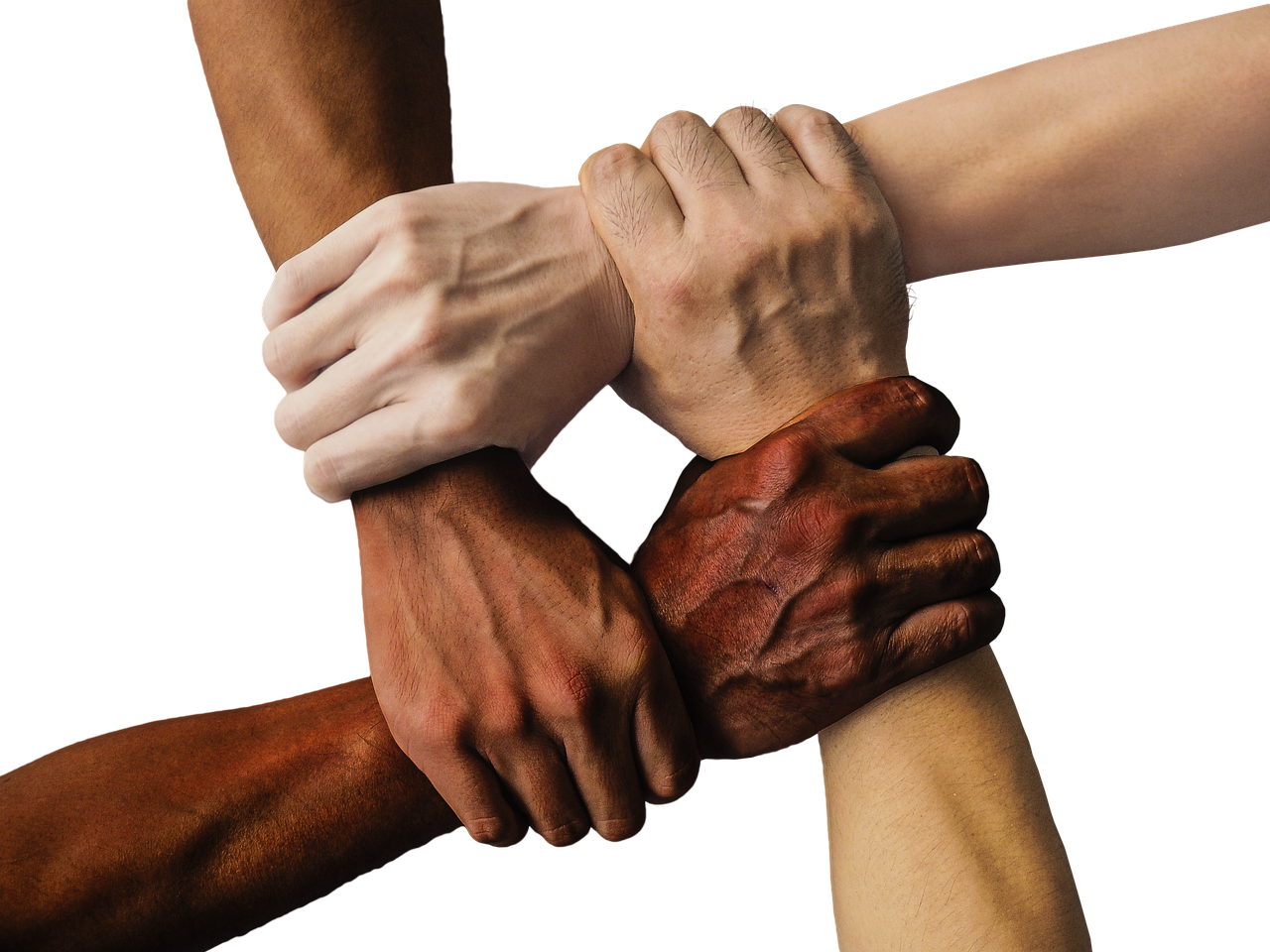Rediscovering Resilience: The Spirit of Tulsa in the 1960s

As we journey back to the 1960s, let us explore the incredible spirit of Tulsa. This decade, marked by social upheaval, cultural transformation, and profound resilience, painted a vivid tapestry of community strength and creativity.
The Heartbeat of the Community
Tulsa in the 1960s was more than just a city; it was a community that thrived on connection. The neighborhood gatherings, the family barbecues, and the local events showcased the unity and strength of its residents. How did these gatherings shape the lives of those who participated?
- **Family Reunions**: A chance to share stories and strengthen bonds.
- **Local Festivals**: Celebrating culture through music, food, and art.
- **Neighborhood Watch**: A united front against crime and a commitment to safety.
Culture and Expression
Art and culture flourished during this time, providing a canvas for self-expression and social commentary. Musicians, artists, and writers played pivotal roles in reflecting the community’s struggles and triumphs. Think back—what artistic movements resonated most during your youth in Tulsa?
- **Music**: The rise of local bands and the influence of jazz and blues.
- **Visual Arts**: Murals and exhibitions showcasing local talent.
- **Literature**: Writers who captured the essence of life in Tulsa.
Social Movements and Change
The 1960s were a time of change—socially, politically, and economically. Tulsans were not just spectators; they were participants in the larger narrative of civil rights and community advocacy. Reflect on how these movements impacted your life or the lives of those around you.
- **Civil Rights Movement**: Local leaders advocating for equality.
- **Community Organizing**: Grassroots efforts to improve local living conditions.
- **Youth Activism**: Young people rallying for change and justice.
Legacy of Resilience
Despite the challenges faced, the resilience of Tulsa’s people shone through. The events of the 1960s laid the groundwork for the community’s future. How do you believe this spirit of resilience has influenced Tulsa today?
| Aspect | Impact | Legacy |
|---|---|---|
| Community Engagement | Increased participation in local governance | Stronger civic pride and responsibility |
| Cultural Development | Emergence of diverse artistic expressions | Enduring cultural festivals and events |
| Social Justice | Progress towards racial equality | Ongoing advocacy and activism |
As we reflect on the spirit of Tulsa in the 1960s, we celebrate not only the triumphs but also the challenges that shaped this vibrant community. The stories we share, the memories we cherish, and the resilience we embody continue to echo through the streets of Tulsa today.
Cultural Renaissance: The Arts That Shaped Tulsa’s Identity

The Vibrancy of Tulsa’s Arts Scene
In the 1960s, Tulsa emerged as a hub of cultural renaissance, marked by a profound transformation in the arts. This period saw artists, musicians, and writers come together, reflecting the dynamic spirit of the city. Have you ever wondered how art can change the identity of a place? Let’s explore this vibrant tapestry woven through creativity.
Music: The Heartbeat of the Community
Music was a defining element of Tulsa’s cultural landscape during this era. From jazz to blues, the city echoed with the sounds of talented local musicians. Consider how these sounds resonated through the streets:
- Jazz Clubs: Establishments like the Blue Note became venues where legends were born. Can you recall any memorable performances you attended?
- Blues Festivals: The annual festivals brought together diverse crowds, celebrating the genre’s roots. What’s your favorite blues song that reminds you of those times?
Visual Arts: A Canvas of Change
Visual arts flourished in Tulsa, showcasing the creativity of its residents. Artists began to use their work as a response to social changes. Let’s reflect on some key movements:
- Abstract Expressionism: Local artists experimented with this style, portraying emotions through color and form. Can you think of a painting that moved you deeply?
- Mural Projects: Community murals sprang up, telling stories of resilience and hope. Have you seen any murals that inspire you to this day?
Theater and Literature: Voices of a Generation
Theatre and literature also played crucial roles in shaping Tulsa’s identity. The 1960s saw a surge in playwrights and authors who challenged societal norms. Consider these influential contributions:
- Local Playwrights: Productions tackled critical issues, reflecting community struggles. Do you remember any plays that sparked meaningful conversations?
- Literary Gatherings: Book clubs and readings became popular, fostering a love for literature. What was a book from this era that left a lasting impression on you?
Legacy of the Cultural Renaissance
The cultural renaissance of the 1960s left an indelible mark on Tulsa’s identity. Artists and performers not only shaped the artistic landscape but also created a sense of community and belonging. As we reminisce about this vibrant period:
- Community Engagement: The arts fostered unity and dialogue among diverse populations. How did these experiences shape your view of community?
- Enduring Influence: The legacy of the 1960s continues to inspire new generations of artists in Tulsa. What do you think the future holds for the arts in our city?
Reflecting on the cultural renaissance of the 1960s not only honors the past but also encourages us to appreciate the rich tapestry of arts that continues to evolve in Tulsa today.
Voices of Change: The Stories of Tulsa’s Trailblazers

In the heart of Tulsa during the 1960s, a remarkable transformation unfolded. Many individuals emerged as trailblazers, paving the way for progress and change. Their stories echo through time, reminding us of the struggles and triumphs that shaped the community.
The Trailblazers of Tulsa
Every city has its heroes, and Tulsa was no exception. It was during the 1960s that various voices rose up, demanding equality and justice. Let’s explore the stories of some of these inspiring figures:
| Name | Contribution | Legacy |
|---|---|---|
| Clara Luper | Led sit-ins to desegregate lunch counters | Inspired future generations of activists |
| John Hope Franklin | Prominent historian advocating for civil rights | Wrote extensively on African American history |
| Dr. A.C. McCarty | Health advocate for the underserved community | Established a clinic that served thousands |
Engagement Through Stories
Each of these figures had a unique story to tell. Imagine sitting in a cozy living room, surrounded by family and friends, sharing these stories. What emotions would arise? Would they inspire laughter, tears, or perhaps a sense of pride?
Interactive Reflection
Consider the following questions:
Who is your favorite trailblazer from Tulsa’s history, and why?
What changes have you witnessed in your lifetime that resonate with the struggles of the 1960s?
How can we continue the work of these trailblazers today?
The voices of change in Tulsa during the 1960s remind us that every action counts. As we reflect on the past, let’s carry forward the spirit of those trailblazers into our communities today.
Unity in Diversity: Celebrating Tulsa’s Multicultural Heritage
Discovering Tulsa’s Rich Cultural Mosaic
Tulsa in the 1960s was a city bustling with a rich diversity of cultures, each contributing to a vibrant community tapestry. This period marked significant social changes, highlighting unity amidst diversity.
The Melting Pot of Cultures
Imagine walking through Tulsa during this dynamic decade. The streets were alive with the sounds of jazz, the aroma of diverse cuisines, and the colorful fabrics of cultural attire. Tulsa was home to various ethnic groups, including:
| Culture | Contribution |
|---|---|
| African American | Rich musical heritage, influencing jazz and blues |
| Native American | Preserving traditions and arts, contributing to local festivals |
| Hispanic | Authentic cuisine and vibrant celebrations like Cinco de Mayo |
| Asian | Introducing new culinary flavors and traditions |
Interactive Cultural Celebrations
Throughout the 1960s, Tulsa hosted numerous festivals and events that celebrated this multicultural heritage. Picture yourself at the Tulsa State Fair or the Oklahoma Jazz Hall of Fame, where different cultures showcased their traditions. Here are a few highlights:
Annual Cultural Festivals: Events that brought together food, music, and dance from various cultures.
Community Gatherings: Bringing diverse groups together to foster understanding and friendship.
Art Exhibitions: Featuring artworks by local artists representing different cultural backgrounds.
Building Bridges: The Importance of Unity
The 1960s were not just about celebrating differences but also about building bridges between communities. Education became a vital tool in promoting unity. Schools began incorporating multicultural education, teaching students about each other’s histories and traditions.
Reflecting on the Past, Inspiring the Future
As we reflect on this era, it’s important to recognize the strength found in diversity. Tulsa’s journey during the 1960s serves as a reminder that unity can emerge from a tapestry of different cultures. Let’s honor this heritage and continue to celebrate our differences, fostering a community where everyone feels valued.
From Shadows to Spotlight: Tulsa’s Unsung Heroes of the 1960s
In the heart of Oklahoma, the 1960s were a time of profound change and resilience. Tulsa, often overshadowed in the annals of American history, was home to numerous unsung heroes whose contributions shaped the social and cultural landscape of the era.
Community Leaders
In the 1960s, many community leaders emerged from the shadows, advocating for civil rights, education, and equality. One such leader was Ruth A. Williams, who tirelessly worked for the integration of schools and public facilities. Her dedication inspired many and brought people together.
Activism and Advocacy
Activism blossomed in Tulsa during this time. Grassroots organizations, often led by women, played a crucial role. Clara L. Lockett, a prominent activist, organized peaceful protests and educational programs. Her work laid the foundation for future generations to continue the fight for justice.
Cultural Contributions
Tulsa’s cultural scene flourished in the 1960s. Artists like John H. Smith used their talents to reflect the struggles and triumphs of the community. His murals, which adorned public spaces, told stories that resonated with many.
Education Reform
Education was a significant focus for many heroes of this era. Dr. Ethel E. Johnson, an educator and advocate, pushed for curriculum changes that included African American history and literature. Her efforts transformed classrooms and empowered students.
Bridging Divides
Many unsung heroes worked to bridge divides within the community. James H. Walker organized interfaith dialogues, fostering understanding and collaboration among different religious groups. His efforts contributed to a more cohesive and united Tulsa.
Tulsa’s unsung heroes of the 1960s, through their relentless efforts and unwavering spirit, brought about significant change. Their stories remind us that every individual has the power to make a difference, no matter how small. Let us honor their legacies by continuing to strive for equality and understanding in our communities.
The Heartbeat of Activism: Tulsa’s Role in the Civil Rights Movement
The 1960s marked a pivotal decade in American history, filled with struggle, hope, and profound change. In the heart of Oklahoma, Tulsa emerged as a significant player in the Civil Rights Movement. This era saw the community rise, unite, and challenge the status quo, fostering a legacy that resonates today.
Historical Context
To understand Tulsa’s role, we must first revisit its history. The city, once a thriving hub for African Americans, especially after the Greenwood District’s flourishing in the 1920s, faced immense challenges, including the devastating 1921 race massacre. This tragedy fueled a persistent fight for justice, equality, and civil rights.
Grassroots Organizing
In the 1960s, grassroots activism became the heartbeat of the movement in Tulsa. Local leaders and organizations emerged, igniting a passion for change:
- NAACP: The Tulsa chapter played a crucial role, organizing protests, rallies, and voter registration drives.
- Student Activism: Young individuals from schools and colleges rallied together, inspired by national leaders and movements.
- Community Engagement: Churches and local organizations provided a foundation for meetings and discussions, fostering unity and strength.
Key Events and Actions
Several key events highlighted Tulsa’s commitment to the Civil Rights Movement:
- Voter Registration Drives: Volunteers worked tirelessly to educate and register African American voters, ensuring their voices were heard.
- Protests and Marches: Large-scale demonstrations took place, demanding equal rights and justice for all citizens.
- Collaboration with National Leaders: Tulsa activists connected with figures like Martin Luther King Jr., amplifying their local efforts.
Challenges Faced
Despite the fervor for change, activists faced numerous challenges, including:
- Opposition and Violence: Many activists encountered hostility from those resistant to change.
- Legal Barriers: Discriminatory laws often hindered progress and the ability to protest peacefully.
- Community Division: Differences in strategy and ideology sometimes caused rifts within the movement.
The Legacy of Tulsa’s Activism
As the 1960s progressed, Tulsa’s efforts contributed to broader national changes. The city’s activism laid the groundwork for ongoing struggles for civil rights, influencing future generations:
- Empowerment: The movement empowered local communities to stand against injustice.
- Awareness: Activists raised awareness about racial issues, echoing beyond Tulsa’s borders.
- Continued Activism: The spirit of activism remains alive today, inspiring ongoing efforts for equality.
Tulsa’s role in the Civil Rights Movement of the 1960s exemplifies the strength and resilience of a community dedicated to change. The echoes of this activism continue to resonate, reminding us of the importance of unity, courage, and the relentless pursuit of justice.
Memories in Motion: Reliving Tulsa’s Iconic Events
Unfolding Memories
As we delve into the 1960s, we embark on a journey that transports us to a time of transformation and resilience in Tulsa. This decade was marked by pivotal events that shaped the cultural landscape of the city. Can you feel the pulse of history as we recall these iconic moments?
Musical Melodies of the Era
Imagine the vibrant sounds of jazz and blues echoing through the streets of Tulsa. Venues like the Blue Note Lounge were alive with the rhythms of legendary musicians. Do you remember dancing to the tunes of artists who performed there? Share your favorite memories of live music!
Community Gatherings
The 1960s were a time for community gatherings that brought people together. From picnics in the parks to neighborhood block parties, these events fostered a strong sense of belonging. What gatherings stand out in your memory? Perhaps a particular festival or celebration that filled the air with laughter and joy?
Historic Civil Rights Movements
This decade also witnessed the rise of the Civil Rights Movement. Tulsans joined hands in solidarity, advocating for equality and justice. Can you recall the feeling of unity during those marches? Share your stories of participation or how these events impacted your life.
Sports and Recreation
Sports played a significant role in the fabric of Tulsa life. The Tulsa Oilers captivated fans with their exciting games. Did you attend any matches? Let’s reminisce about those thrilling moments and the camaraderie felt in the stands!
Artistic Expressions
The arts flourished during the 1960s, with local artists showcasing their talents at galleries and exhibitions. The vibrant murals and sculptures reflected the spirit of innovation. What artistic events do you recall that inspired you? Perhaps you even tried your hand at creating something yourself!
Legacy of Change
As we reflect on these iconic events, we recognize their lasting impact on Tulsa’s identity. The memories we share are not just stories of the past; they are the echoes of change that continue to resonate today. How do these memories shape your understanding of Tulsa’s journey?
Join the Conversation
Let’s come together to relive these moments. Share your stories and experiences, and let’s create a collective tapestry of memories that honors the spirit of the 1960s in Tulsa!
Architects of Tomorrow: The Visionaries Behind Tulsa’s Transformation
Introduction to Tulsa’s Visionaries
In the 1960s, Tulsa, Oklahoma, was a city on the brink of transformation. A myriad of visionaries emerged, each playing a pivotal role in reshaping the urban landscape and redefining the community’s identity. These individuals were not merely dreamers; they were architects of change, laying the groundwork for a vibrant future.
Key Figures in Tulsa’s Transformation
Let’s explore some of the notable figures whose contributions were crucial in Tulsa’s metamorphosis:
- W. Tate Brady: A prominent businessman and philanthropist, Brady was instrumental in the development of the Brady Arts District, fostering a cultural renaissance in the city.
- John Hope Franklin: A distinguished historian, Franklin’s work brought attention to Tulsa’s rich African American heritage, particularly the Greenwood District, inspiring future generations to embrace their history.
- Mary B. Talbert: A civil rights activist, Talbert worked tirelessly to promote equality and justice, influencing policies that aimed to uplift marginalized communities.
Community Initiatives and Urban Development
In addition to individual contributions, several community initiatives emerged during this transformative decade:
- The Urban Renewal Program: Launched in the late 1950s and into the 1960s, this program aimed to revitalize blighted areas of Tulsa, attracting new businesses and residents.
- Arts and Culture Festivals: Events like the Tulsa State Fair and various arts festivals began to celebrate local talent, fostering a sense of community pride and engagement.
- Educational Reforms: With an emphasis on inclusivity, schools began to implement changes that promoted diversity and equality, helping to shape a more equitable future.
Legacy of the 1960s Visionaries
The visionaries of the 1960s left a lasting legacy that continues to influence Tulsa today. Their commitment to progress and community upliftment is evident in:
- Modern Infrastructure: The development of parks, public spaces, and cultural institutions has created a vibrant urban environment.
- Preservation of History: Efforts to document and celebrate Tulsa’s diverse history ensure that future generations understand and appreciate their roots.
- Community Engagement: The spirit of activism fostered by these visionaries inspires ongoing efforts to address social issues and promote inclusivity.
Conclusion: Celebrating the Architects of Tomorrow
As we reflect on the transformative period of the 1960s, it is essential to honor the architects of tomorrow—those visionaries who saw potential where others saw obstacles. Their legacy is a testament to the power of community, creativity, and courage in shaping a brighter future for Tulsa.
Nostalgic Journeys: Revisiting Tulsa’s Historic Landmarks
Explore the Heart of Tulsa
As we take a nostalgic journey through the streets of Tulsa, we invite you to revisit the historic landmarks that have shaped our community. Each building, park, and street corner holds stories of resilience, creativity, and unity. Let’s stroll down memory lane together!
The Golden Driller
Location: Expo Square
Year Established: 1966
The Golden Driller stands tall, a symbol of Tulsa’s oil boom and a beloved mascot for the city. Its towering figure has witnessed countless events and exhibitions over the decades. Can you recall the fairs and festivals held nearby? Share your favorite memories!
Philbrook Museum of Art
Location: 2727 S. Rockford Rd
Opened: 1939
Originally the home of oil baron Waite Phillips, the Philbrook Museum is a stunning blend of art and architecture. The beautiful gardens are perfect for leisurely strolls. Have you attended any exhibitions here? Which artwork moved you the most?
Woodward Park
Location: 21st & Peoria
Established: 1909
Woodward Park is a serene escape within the city, featuring lush landscapes and walking paths. It’s a great spot for gatherings and picnics. Do you remember the family outings or quiet afternoons spent here? What was your favorite picnic treat?
The Brady Theater
Location: 105 W. Brady St
Opened: 1914
Once a bustling venue for vaudeville shows, the Brady Theater has hosted many legendary performances. Reflect on the concerts or plays you attended—who was your favorite artist or actor? Let’s celebrate those unforgettable nights!
Tulsa’s Historic Greenwood District
Significance: Cultural Hub
The Greenwood District, known as “Black Wall Street,” was a thriving center of African American commerce and culture in the 1920s. Although it faced tragic events, its legacy continues to inspire. Have you visited the Greenwood Cultural Center? How did it resonate with you?
Now, let’s engage! As you reflect on these landmarks:
- What emotions do they evoke for you?
- Which landmark would you like to revisit and why?
- Share a story or anecdote related to a place in Tulsa.
Your experiences and memories are invaluable. Let’s keep the spirit of Tulsa alive by sharing and cherishing our past!
Legacy of Hope: How the 1960s Shaped Tulsa’s Future
Embracing Change
The 1960s was a decade of turmoil and transformation, not only for the nation but also for Tulsa. This era marked a significant shift in cultural, social, and political landscapes. Can you recall the vibrant sounds of music echoing through the streets? Jazz, blues, and rock ‘n’ roll filled the air, weaving a rich tapestry of community spirit.
Community Resilience
One of the most striking features of Tulsa during this time was the resilience of its community. The civil rights movement played a crucial role, inspiring many to stand up against inequality. Do you remember the gatherings and protests? They were not just events; they were a call for justice and a testament to the strength of the human spirit.
Economic Growth and Innovation
As the decade progressed, Tulsa experienced economic growth that laid the foundation for its future. The oil industry, which had been a backbone of the local economy, began to diversify. New businesses emerged, creating job opportunities and fostering innovation. Have you seen how the landscape of Tulsa has changed since then? The seeds planted in the 1960s continue to bloom today.
Cultural Renaissance
The cultural renaissance of the 1960s in Tulsa cannot be overstated. The establishment of art galleries, theaters, and music venues shaped a vibrant cultural scene. Did you attend any performances or exhibitions? These spaces became hubs of creativity and expression, laying the groundwork for future generations of artists and performers.
Legacy of Hope
As we reflect on the legacy of hope that emerged from this tumultuous decade, it’s essential to recognize the lessons learned. The struggles and victories of the 1960s taught us that change is possible through unity and perseverance. What can you share about your experiences during this transformative time? Your stories are invaluable pieces of Tulsa’s history.
